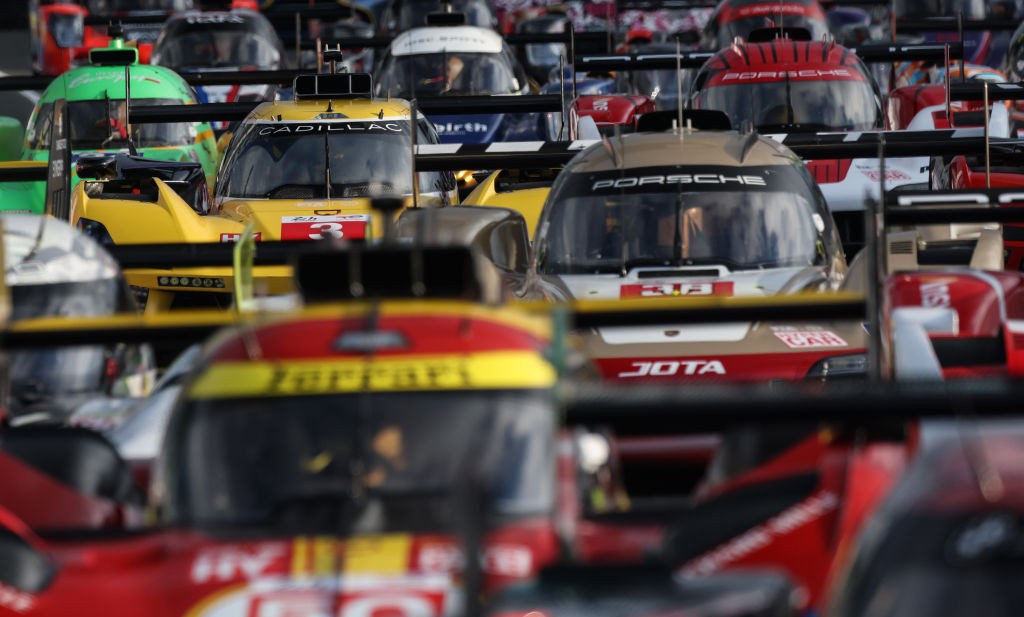
It is undeniable that the current converged era for top class sports cars in the FIA World Endurance Championship and IMSA WeatherTech SportsCar Championship has been a runaway success to this point. It has attracted an array of manufacturers on both sides of the Atlantic and generated close, hard-fought racing for overall wins at the majority of the most prestigious endurance races on the planet. But a plan needs to be put in place sooner rather than later to ensure that the current momentum carries forward into the next decade, when the challenges posed globally on the automotive industry look set to become ever greater.
Porsche, for one, favors a set of rules based on a single platform and for the manufacturers to collaborate on a framework for the FIA and ACO to work with soon. As it stands the current Hypercar ruleset is in place through to the end of the 2029 season, following a two-year extension announced at Le Mans last year. This is a decision that has been widely welcomed by the manufacturers already in competition and prompted additional OEMs (Genesis and Ford) to commit to programs from 2026 and ’27 respectively.
Behind the scenes, work is already ongoing to paint a picture of what’s to come through the start of the next decade, although little has been said on the record about the future of LMH and LMDh specifically. Instead, the ACO and FIA have been more vocal about their work with select manufacturers on a ruleset that would see hydrogen-powered prototypes compete at Le Mans and the FIA WEC from 2028.
There’s been plenty of discussion in the paddocks of both series around the pros and cons of the current rules being extended further into the next decade. This would see the current crop of cars overlap fully with the proposed phased introduction of hydrogen-powered prototypes.
The current Hypercar regulations look set to be extended further, until 2032, and the hydrogen ruleset’s debut is likely to be pushed back once again to 2030. The latter is due in part to the complexities associated with FIA’s decision to push liquid hydrogen over gaseous hydrogen.
This added time would hand prospective manufacturers more opportunities to join Hypercar and GTP in the years to come. It seems a sensible choice, as at least three OEMs not currently confirmed are understood to be ready to put together programs in the wake of the decisions above.
In this case, the biggest question is what will be on offer, if anything, for factories not interested in hydrogen tech?
At the WEC opener in Qatar, Porsche Motorsport vice president Thomas Laudenbach was asked if a future centered around non-hybrid cars running on eFuels (synthetic, liquid fuels produced from hydrogen obtained purely from renewable energy and CO₂) would make sense, in the wake of the WRC and BTCC stepping away from hybrid technology.
“I don’t think it’s very likely,” he said. “If I excluded it 100 percent I’d be stupid but honestly, if you refer to the fact that electrification has slowed down a bit , it doesn’t mean electrification will not happen.
“We are big supporters of eFuels, in conjunction with electrification, not in competition. That’s not happened so far, except for our Supercup, there is no series racing on eFuels. There are sustainable and renewable fuels (such as the TotalEnergies Excellium Racing 100 used in the WEC), but not eFuels. If this happens, OK. But I don’t think it’s very likely. Maybe it will change if public awareness and legislation treat eFuels differently.
“I think it’s a mistake in the long term . If motorsport thinks motorsport can give the general direction in the world for mobility, motorsport is going to die,” he warned.
With that in mind, Laudenbach feels a common set of rules to replace the combination of LMH and LMDh cars we see today would be the most sensible way forward.
“The first and most important thing here is that we get rid of these two different sets of rules so that we’re not going to talk about LMH and LMDh anymore. I think that’s the first thing,” he said. “I think it makes sense that we operate with a limited amount of technical freedom in order to control our budgets, which is very important, because if we come back to LMP1 times — which as an engineer, were great but we know how we ended up…
“So I think, without being very precise, maybe it’s some kind of mixture between LMH and LMDh — what we have today. Honestly, I think if we would talk to the LMH manufacturers today and ask them what they need in the rules, it would be good.
“Ferrari said what’s important is that the chassis is theirs. Why don’t we look at those points and make a set of rules out of that? I think that’s extremely important because then we at least get rid of some of the discussions and then if we talk about technology again, the most important thing is it’s relevant for what happens on the road.